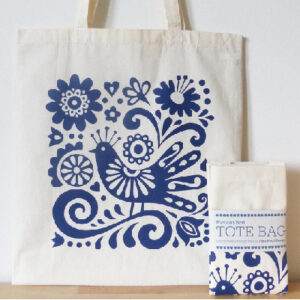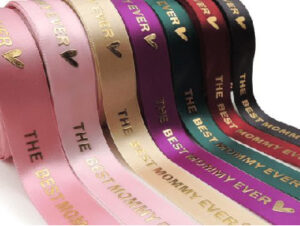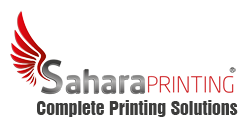Best Screen Printing Service in Dubai, Sharjah, Abu Dhabi and Ajman.
The technique of screen printing involves utilizing a mesh screen, ink, and a squeegee to transfer a stenciled design onto a flat surface. Screen printing is most usually done on fabric and paper, but it may also be done on wood, metal, plastic, and even glass with the right inks. Custom printing on a range of materials, such as clothing, banners, and other promotional goods, is available through screen printing services.

Screen Printing Quality
The quality of screen printing is determined by several factors that ensure the final product meets high standards of durability, clarity, and visual appeal.
1.Ink Quality
Types of Inks: Different inks (plastisol, water-based, discharge) offer varying finishes and durability. High-quality inks result in vibrant, long-lasting prints.
Consistency: Good inks maintain consistent color and thickness, ensuring uniform prints across all items.
2.Screen Mesh:
Mesh Count: Higher mesh counts (finer mesh) produce more detailed prints. The appropriate mesh count depends on the design complexity and the type of ink used.
Tension: Properly tensioned screens result in sharper prints and less ink bleed.
3.Pre-Treatment:
Fabric Preparation: Proper pre-treatment of fabrics (e.g., pre-washing) ensures better ink adhesion and prevents shrinking or color bleeding after washing.
Priming the Screen: Screens should be clean and properly coated with emulsion for clear and crisp prints.
4.Print Technique:
Proper Registration: Ensures that multi-color designs align correctly, avoiding blurry or misaligned prints.
Pressure and Speed: The right combination of squeegee pressure and printing speed affects the ink distribution and print quality.
5.Curing Process:
Heat Setting: Proper curing (usually at 320°F for plastisol inks) ensures the ink bonds well with the fabric, preventing cracking or peeling.
Curing Time: Sufficient curing time is essential to achieve durable prints.
6.Design Considerations:
Detail and Complexity: Highly detailed designs require more precision in screen preparation and printing. Simplified designs tend to result in cleaner prints.
Color Separation: Proper color separation techniques ensure accurate reproduction of multi-color designs.
7.Quality Control:
Inspection: Thorough inspection of each print helps catch defects early, ensuring only high-quality items are delivered.
Consistency: Maintaining consistency across all printed items, especially in bulk orders, is crucial for overall quality.
Advantages of Screen Printing
One of the various printing techniques you can employ to produce one-of-a-kind, vibrant graphics with a wide range of hues and forms is screen printing. Screen printing is a technique that can be used to produce branded consumer goods like apparel or traditional artwork. Although screen printing has several benefits, it’s crucial to comprehend how it operates first.
Versatility:
Wide Range of Materials: Screen printing can be applied to a variety of surfaces, including textiles (t-shirts, hoodies, bags), paper, glass, metal, wood, and plastic.
Variety of Inks: Different inks (plastisol, water-based, discharge, UV) can be used for various effects and finishes.

Durability:
Long-Lasting Prints: Screen printing produces durable prints that can withstand frequent washing and heavy use without fading or peeling.
Resistance to Wear: The thickness and composition of the ink used in screen printing make it resistant to wear and environmental factors.
Vibrant Colors:
Color Intensity: Screen printing allows for the application of thick layers of ink, resulting in vibrant and opaque colors that stand out on both light and dark backgrounds.
Color Matching: The process supports precise color matching, ensuring that specific brand colors or design elements are accurately reproduced.
Cost-Effective for Bulk Orders:
Economies of Scale: The cost per unit decreases significantly with larger quantities, making screen printing highly cost-effective for bulk orders.
Lower Setup Costs: Once the screens are created, the cost of additional prints is relatively low, leading to savings on large print runs.
Flexibility in Design:
Customization Options: Screen printing allows for a high degree of customization, including the use of special effects like metallic inks, puff inks, and glow-in-the-dark inks.
Adaptability to Complex Designs: While best suited for simple and bold designs, screen printing can also handle complex multi-color designs with proper setup.
Speed and Efficiency:
High-Speed Production: Once the setup is complete, screen printing can produce large quantities of prints quickly, making it ideal for meeting tight deadlines.
Batch Printing: The process allows for efficient batch printing, ensuring consistency across all items in an order.
Consistency and Quality:
Uniform Prints: Screen printing provides consistent results across multiple items, ensuring that each print matches the original design specifications.
High-Resolution Output: When using high-quality screens and inks, the process can produce sharp and clear prints with fine details.
Specialty Applications:
Unique Effects: Screen printing supports various specialty applications, such as creating textured prints, raised designs, and other tactile effects that add dimension to the print.
Custom Shapes and Sizes: The process can accommodate custom shapes and sizes, allowing for creative and unique print projects.
Conclusion
Screen printing is a highly versatile and reliable method for producing high-quality prints on a variety of materials. Its advantages in durability, color vibrancy, cost-effectiveness for bulk orders, and flexibility in design make it a preferred choice for many businesses and individuals looking to create custom apparel, promotional items, and more.

